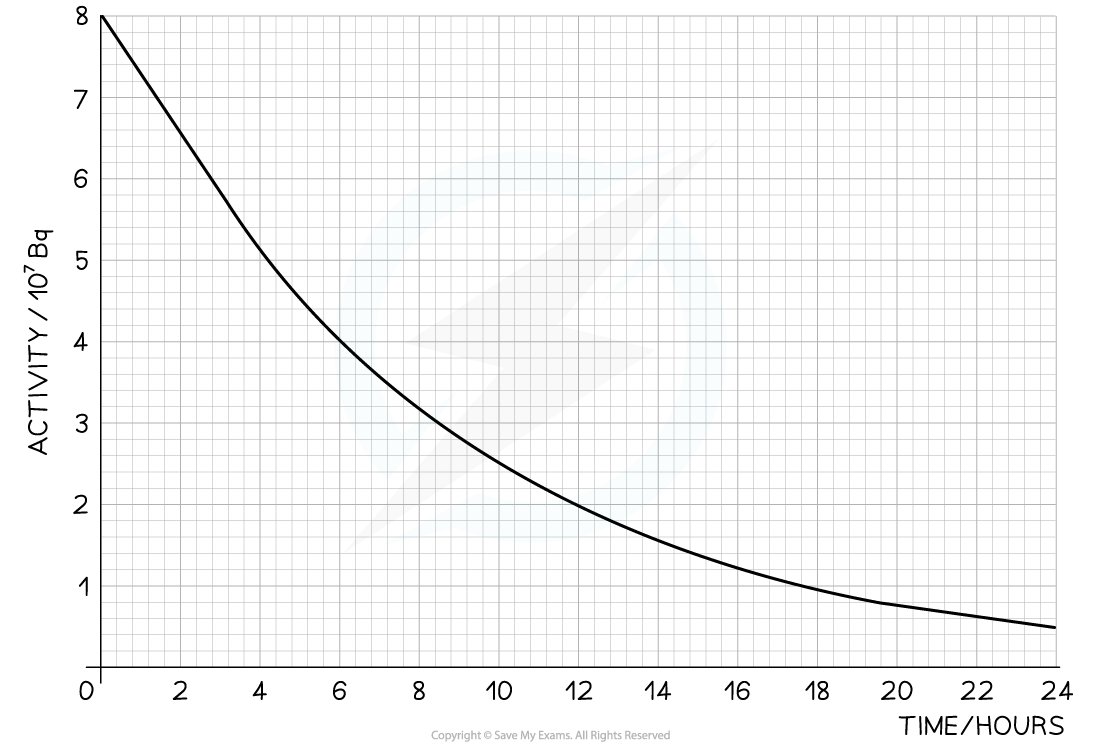Half-Life (Edexcel IGCSE Physics (Modular)) : Revision Note
Half life
It is impossible to know when a particular unstable nucleus will decay
It is possible to find out the rate at which the activity of a sample decreases
This is known as the half-life
Half-life is defined as:
The time it takes for the number of nuclei of a sample of radioactive isotopes to decrease by half
In other words, the time it takes for the activity of a sample to fall to half its original level
Different isotopes have different half-lives and half-lives can vary from a fraction of a second to billions of years in length
Measuring half life
To determine the half-life of a sample, the procedure is:
Measure the initial activity A0 of the sample
Determine the half-life of this original activity
Measure how the activity changes with time
The time taken for the activity to decrease to half its original value is the half-life
Calculating half-life
Scientists can measure the half-lives of different isotopes accurately
Uranium-235 has a half-life of 704 million years
This means it would take 704 million years for the activity of a uranium-235 sample to decrease to half its original amount
Carbon-14 has a half-life of 5700 years
So after 5700 years, there would be 50% of the original amount of carbon-14 remaining
After two half-lives or 11 400 years, there would be just 25% of the carbon-14 remaining
With each half-life, the amount remaining decreases by half
A graph can be used to make half-life calculations

The graph shows how the activity of a radioactive sample changes over time. Each time the original activity halves, another half-life has passed
The time it takes for the activity of the sample to decrease from 100% to 50% is the half-life
It is the same length of time as it would take to decrease from 50% activity to 25% activity
The half-life is constant for a particular isotope
The following table shows that as the number of half-life increases, the proportion of the isotope remaining halves
Half life calculation table
number of half lives | proportion of isotope remaining |
0 |
|
1 |
|
2 |
|
3 |
|
4 |
|
Worked Example
The activity of a particular radioactive sample is 880 Bq. After a year, the activity has dropped to 220 Bq.
What is the half-life of this material?
Answer:
Step 1: Calculate how many times the activity has halved
Initially, the activity was 880 Bq
After 1 half-life the activity would be 440 Bq
After 2 half-lives, the activity would be 220 Bq
Therefore, 2 half-lives have passed
Step 2: Divide the time period by the number of half-lives
The time period is a year
The number of half-lives is 2
So two half-lives is 1 year, and one half-life is 6 months
Therefore, the half-life of the sample is 6 months
Worked Example
The radioisotope technetium is used extensively in medicine. The graph below shows how the activity of a sample varies with time.

Determine the half-life of this material.
Answer:
Step 1: Draw lines on the graph to determine the time it takes for technetium to drop to half of its original activity

Step 2: Read the half-life from the graph
In the diagram above the initial activity, A0, is 8 × 107 Bq
The time taken to decrease to 4 × 107 Bq, or ½ A0, is 6 hours
Therefore, the half-life of this isotope is 6 hours

You've read 0 of your 5 free revision notes this week
Sign up now. It’s free!
Did this page help you?

